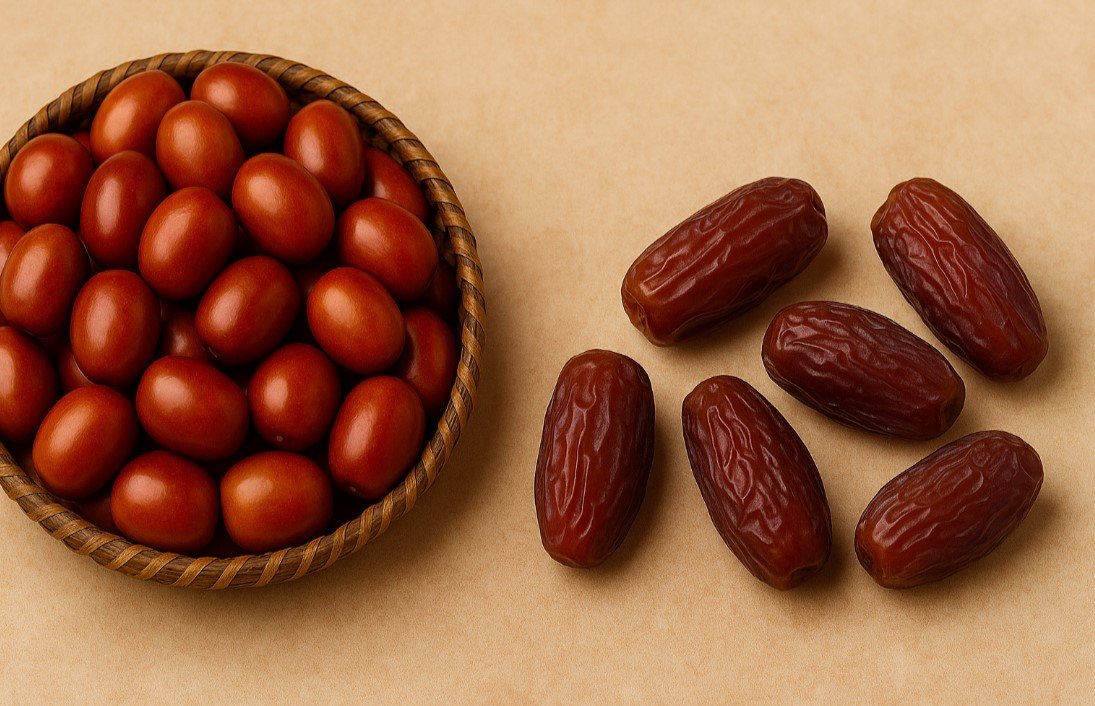Food
What Are Žižole? A Guide to Slovenia’s Jujube Fruit

Žižole are small, reddish-brown fruits found in Slovenia. They are also known as jujube fruits in English. These fruits grow on a tree called Ziziphus jujuba. In Slovenia, žižole have been part of traditional food and medicine for many years. The fruit is sweet when ripe and slightly sour when it is still young. It is often eaten fresh, dried, or made into teas, jams, or other treats.
This guide will explain what žižole are, where they grow, how Slovenians use them, their health benefits, and how they are different from similar fruits. At the end, you will also find a table of Slovenian words related to fruits or plants that are often found in local use.
Where Do Žižole Come From?
The žižola tree is originally from Asia. It has been grown for over 4,000 years in China, India, and nearby countries. Over time, people started growing it in the Mediterranean region, including in Slovenia. In Slovenia, žižole are mostly found in the southwestern part of the country, especially near the coast, where the climate is warmer. The fruit ripens in late summer to early autumn.
What Do Žižole Look Like?
Žižole are small and round or oval, about the size of an olive or small plum. When they are young, they are green. As they ripen, they turn brownish-red. The skin is smooth and shiny, and the inside is firm with a single hard seed in the centre. Dried žižole look wrinkled, almost like small dates.
How Are Žižole Eaten?
Slovenians eat žižole in many ways. Here are some common methods:
- Fresh: Many people eat them fresh when they ripen. They are sweet and slightly crunchy, similar to an apple.
- Dried: Just like dates or raisins, žižole can be dried. This makes them sweeter and gives them a chewy texture.
- Tea: Dried žižole can be boiled in water to make a natural, caffeine-free tea.
- Jam or syrup: Some people cook žižole with sugar and water to make jam or syrup.
- Medicinal use: In traditional medicine, žižole are used to help with sleep, digestion, or sore throats.
Health Benefits of Žižole
Žižole are not just tasty. They also have health benefits. Here are some of the nutrients and effects:
- Vitamin C: Helps the immune system and skin health
- Antioxidants: May protect the body from damage by free radicals
- Fibre: Helps digestion and keeps you full longer
- Low in fat: Good for people watching their weight
- Natural sleep aid: In some cultures, they are used to calm the mind and help sleep
These benefits make žižole a healthy snack choice for both children and adults.
Growing Žižole Trees in Slovenia
Žižola trees grow best in sunny places with warm summers and mild winters. They can handle dry soil and do not need a lot of water once they are fully grown. The tree is strong and can survive in different types of land. In Slovenia, they are often found in gardens or small farms in the coastal region.
It takes a few years for a young žižola tree to start producing fruit. But once it does, it can give many fruits every year. The tree has small yellow flowers that attract bees, and then the fruits begin to form. Most žižole are ready for picking between August and October.
Are Žižole the Same as Dates?
No, žižole and dates are not the same, even though dried žižole may look similar to dates. Dates come from the date palm tree and are usually much sweeter and stickier. Žižole have their own unique taste and are often firmer than dates. They also contain fewer natural sugars compared to dates.

Cultural Importance of Žižole in Slovenia
In some parts of Slovenia, žižole are more than just food. They are part of local customs and memories. Older generations often remember picking žižole as children or making tea from dried fruits during the winter. In coastal areas, especially around Koper and Piran, you might find žižole sold at local markets during the season. Some festivals even feature stalls with fresh and dried žižole for tasting.
Žižole are not as common in supermarkets as other fruits, but they are well-known to people who live in or near the countryside. They are sometimes shared between neighbours or given as gifts during harvest time.
Where Can You Buy Žižole?
You can buy žižole in Slovenia during their season, usually from late August to October. They are sold:
- At local farmer’s markets
- At roadside fruit stands in the countryside
- Sometimes in organic or natural food stores
- Online shops that sell dried fruits
Outside Slovenia, you might find jujube fruits in stores that sell Asian or Mediterranean food.
Similar Slovenian Words and Their Meanings
Here are some of the Slovenian words that are similar in nature, usually related to traditional or regional fruits and plants:
| Slovenian Word | English Meaning | Description |
| Žižola | Jujube fruit | Small brown fruit, sweet and used fresh or dried |
| Šipek | Rose hip | Red fruit from wild roses, used in tea and syrup |
| Kostanj | Chestnut | Brown nut from a chestnut tree, roasted or boiled |
| Robida | Blackberry | Black fruit that grows on brambles |
| Dren | Cornelian cherry | Red fruit, sour taste, often made into syrup |
| Bezeg | Elderberry | Small dark berries, used in juice and jams |
| Figa | Fig | Soft, sweet fruit, eaten fresh or dried |
| Sliva | Plum | Common stone fruit used in jams or eaten raw |
| Marelica | Apricot | Orange fruit, sweet and juicy |
| Hruška | Pear | Soft, juicy fruit, comes in many types |
Final Thoughts
Žižole are a unique part of Slovenia’s natural and cultural heritage. They are sweet, healthy, and easy to enjoy in many ways. Though not widely available in supermarkets, they hold a special place in Slovenian gardens and kitchens. If you ever visit Slovenia in the late summer or early autumn, trying fresh žižole from a local market is a great way to experience traditional Slovenian food.
These small fruits may look simple, but they offer a taste of the past and a healthy snack for today. Whether you like them fresh or dried, žižole are worth trying if you want to discover something special from Slovenia.
Check out: What is Kimchi? Ingredients, Origins, and the Secrets Behind Its Red Color
-

 Social Media2 months ago
Social Media2 months agoWhat the “67” TikTok Meme Really Means
-

 Tech2 months ago
Tech2 months agoWhat To Do When Your Business Faces Network Vulnerabilities
-

 Self Improvement2 months ago
Self Improvement2 months agoUsing BCBS Rehab to Access Quality Addiction Care
-

 Games2 months ago
Games2 months agoPusoy Strategies for Play That Also Work in Pusoy Dos in English






